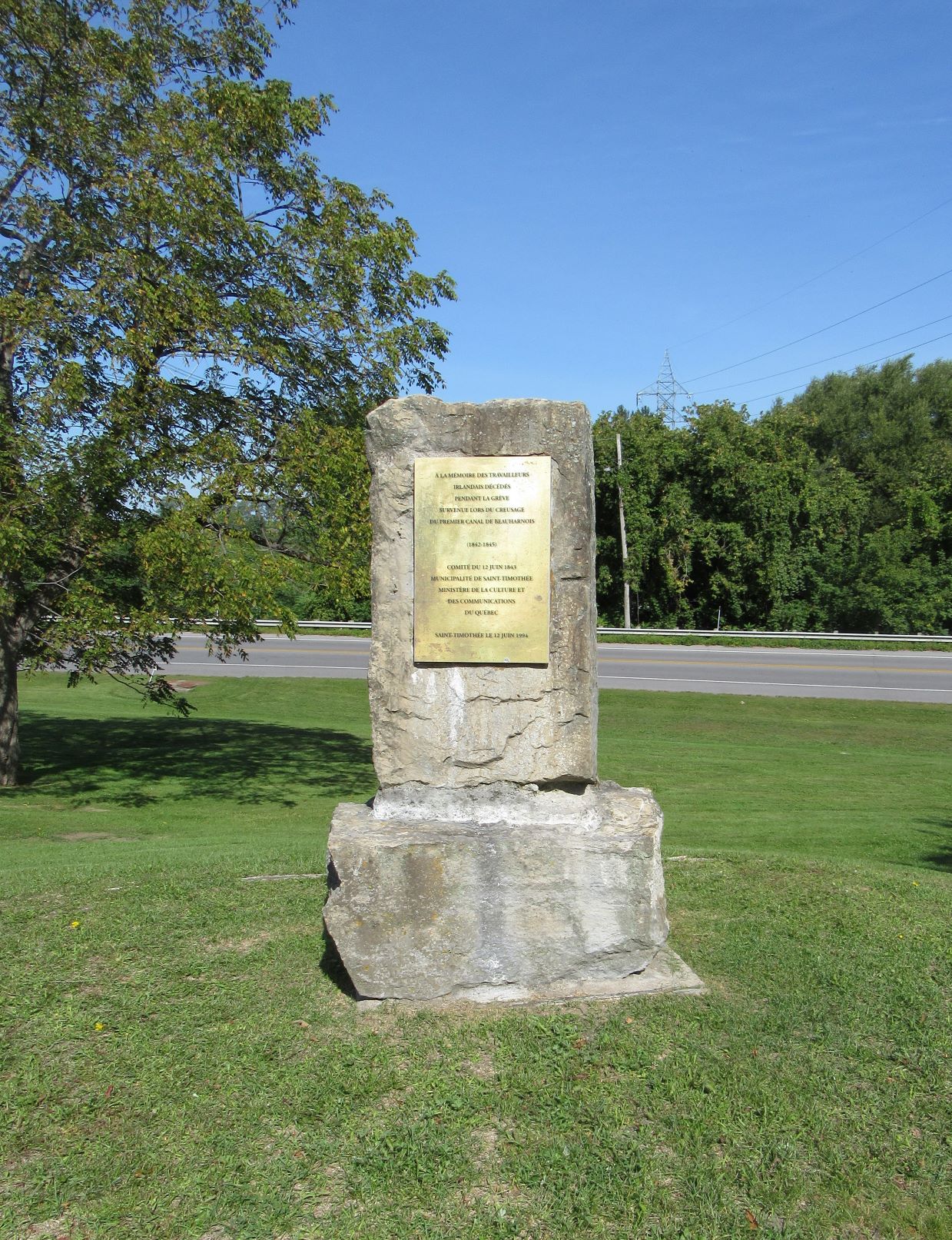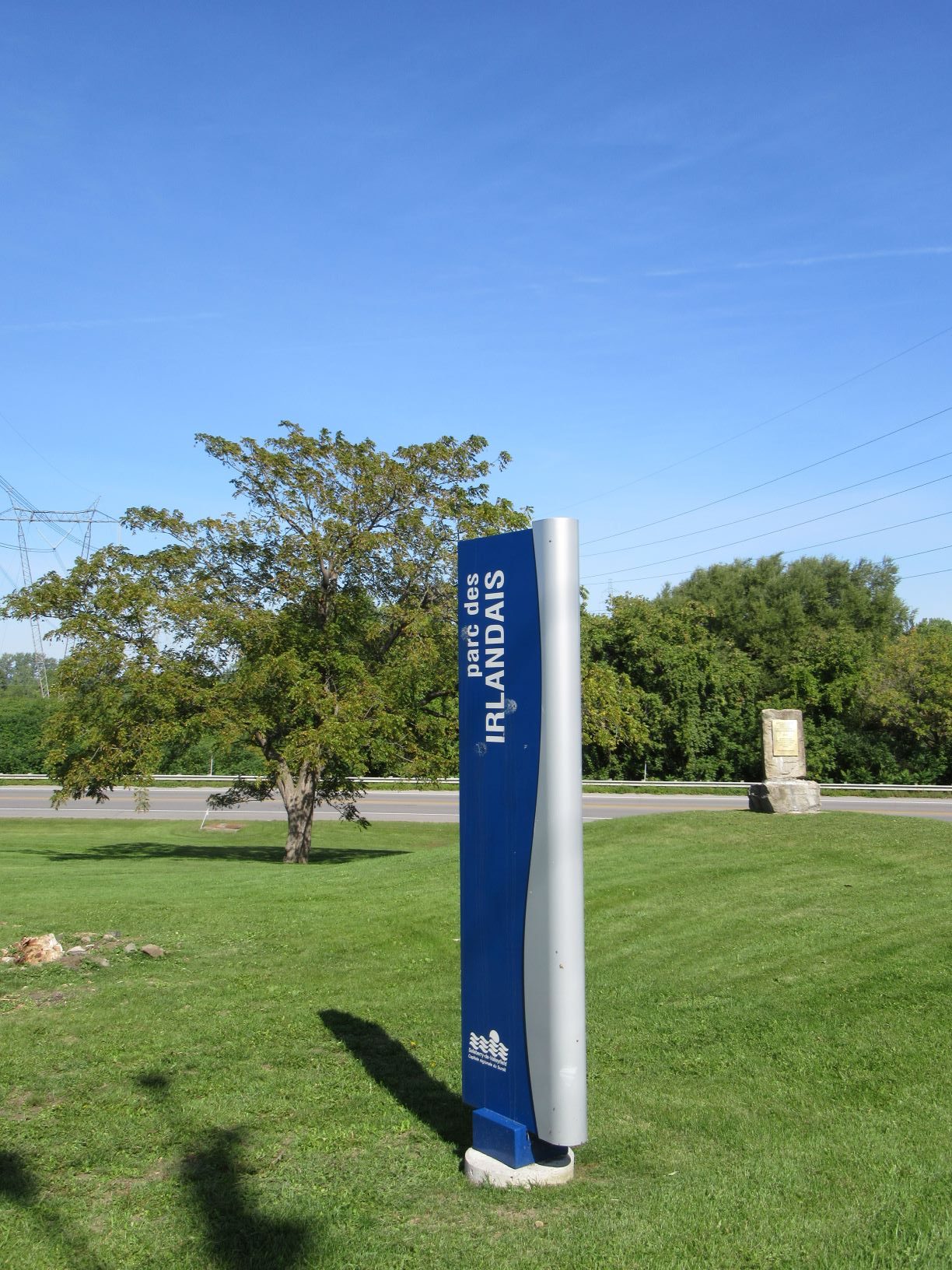(GPS 45°17’59.23″N 74° 1’41.15″W)
A solitary rock memorial lies on a hill next to a derelict power station near Saint-Timothée, Québec on the southwest shore of Lake St. Louis. It commemorates a labour riot, perhaps the bloodiest in our nation’s past, between Irish canal workers, their private employer and the British Army and cavalry.
It reads:
“Located near Grant Manor, this monument commemorates a forgotten page of our history. In 1843, no longer able to tolerate miserable working conditions and poverty in which they lived, Irish laborers walked off work of the construction of the first Beauharnois Canal. June 12, 1843, they gathered in front of the Grant hotel where lived the entrepreneurs of the canal, to demand an improvement in their conditions. The militia was ordered to instruct the group to disperse. In the chaos that followed, more than 20 workers were shot, killed with swords or drowned in the river.
“In memory of the Irish workers who died during the strike that occurred during the digging of the first Beauharnois Canal. (1842-1845)”

Irish Labour Riot Memorial at Saint-Timothée, Québec © Barbara Dickson
The Canadian government used immigrants throughout Canada’s 19th century to build roads, canals, bridges and to work in the mines and forests. Disadvantaged economically, politically and socially, they typically were underpaid and overworked. Homeless and penniless, workers’ pay was often spent on company-owned campsites for food, clothing and the essentials of life leaving scant little to send home or save. Free land was often promised in lieu.
The plight of Irish workers digging the first of three Salaberry-de-Valleyfield / Beauharnois canals allowing ships to bypass the St. Charles River and the Hochelaga Archipelago just west of Lake St. Louis is a uniquely shocking and surprisingly ignored historical event. “When work began on the first Beauharnois Canal, workers laid tracks to remove the soil from the site by cart, by horse and sometimes by train. The work was done by pick and shovel by thousands of men, mainly Irish immigrants. The worksite was 18 kilometres long.” (Valee 2009)
On June 12, 1843 the workers were informed their employment contract was to be transferred from the government to a private employer. Furthermore, their work day was to be extended by two hours yet their pay was being reduced from three shillings to two-and-a-half shillings (equivalent to 50 cents today).

Irish Labour Riot Memorial at Saint-Timothée, Québec © Barbara Dickson
Desperate, 2,000 Irish workers marched alongside their supportive Catholic priests to the Grand Hotel in Saint-Timothée to demand better working conditions. Outside the hotel, they met their employer who, with the local government’s support, literally read them the Riot Act (Riot Act, Wikipedia n.d.). Fighting ensued. The employer, unmoved by their pleas and equally unable to contain the situation, deferred to the British army to quell the rioting workers. With bayonets fixed, the army attacked the Irish workers killing five (and perhaps as many as twenty,) wounding fifty, arresting twenty-seven and forcing all to flee. An inquiry into the incident months later acquitted the British Army for their actions.
To our knowledge, no other labour action in Canada’s history ended in such carnage.
The memorial to the fallen Irish can be found on Hebert Road at Parc Irelandais next to the derelict hydro station in Saint-Timothée, Québec.
